#marie menken
Photo



“Fantasía flamenca” - “Arabesque for Kenneth Anger” de Marie Menken
2 notes
·
View notes
Text
#best snubbed musical world cup#best snubbed musical world cup finals#best musical world cup#best musical#broadway#musical theater#musical theatre#musicals#theater#theatre#the guy who didn't like musicals#the hunchback of notre dame#mary poppins#team starkid#starkid#disney#alan menken#stephen schwartz#polls
106 notes
·
View notes
Text
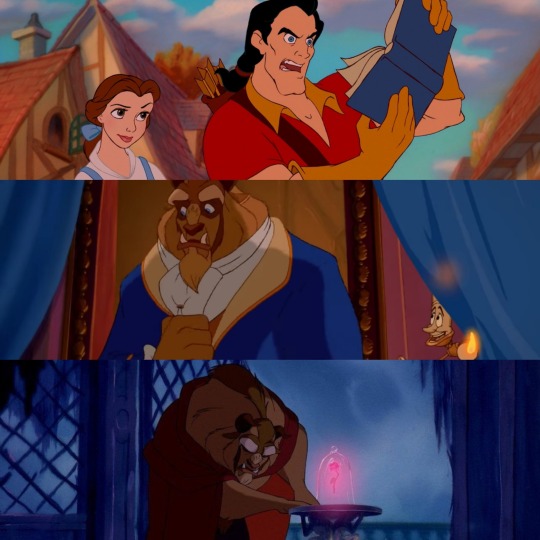
Beauty and the Beast (1991, Gary Trousdale and Kirk Wise)
08/02/2024
Beauty and the Beast is a 1991 animated film directed by Gary Trousdale and Kirk Wise, produced by Walt Disney Feature Animation and distributed by Walt Disney Pictures.
It is the 30th Disney Classic, it is the third film of the Disney Renaissance, and is based on the fairy tale Beauty and the Beast by Jeanne-Marie Leprince de Beaumont, taking some ideas from the 1946 film of the same name. The film's music was composed by Alan Menken, while Howard Ashman, to whom the film is dedicated (he died a few months before the film's release), was the author of the lyrics.
Beauty and the Beast was released in the United States of America on November 13, 1991. The film grossed $331 million at the worldwide box office against a budget of $25 million, and received widespread acclaim for its romantic narrative, animation (particularly the ballroom scene), the characters and the musical numbers. It was the first animated film ever to be nominated for the Academy Award for Best Picture, and remained the only one until 2010 and 2011 when, after the number of possible nominations for the statuette had been increased from five to ten, it was joined by Pixar's films Up and Toy Story 3. It ended up winning two, for best soundtrack and best song (the famous Beauty and the Beast, sung by Céline Dion and Peabo Bryson in the final duet). The film was also awarded three Golden Globes: best comedy/musical film, soundtrack and original song, as well as other international awards.
After the success of the 3D re-release of The Lion King in 2011, the film returned to cinemas in 3D on 13 January 2012 in American cinemas, while in Italy it was released on 13 June of the same year.
In 2002, the film was selected for preservation in the National Film Registry of the United States Library of Congress because it was "culturally, historically, or aesthetically significant".
A long time ago, in a distant country in France, there lived in a magnificent castle a prince with a handsome and charming app9, but with a spoiled, selfish and bad character.
One winter night, an older beggar woman arrived at the castle asking for asylum from the cold and offering a rose in exchange. At that point, the beggar woman transformed into a fairy; seeing the prince's selfishness, the fairy transformed him into a horrible Beast, and his servants into furnishing objects. Despite everything, however, she also granted him a chance at redemption: the rose was enchanted and would remain in bloom until the prince's twenty-first birthday.
#beauty and the beast#animation#1991#gary trousdale#kirk wise#Walt Disney Animation Studios#walt disney pictures#List of Walt Disney Animation Studios films#fairy tale#jeanne marie leprince de beaumont#alan menken#howard ashman#united states#box office#Academy Award for Best Picture#up#toy story 3#pixar#Academy Award for Best Original Score#Academy Award for Best Original Song#celine dion#peabo bryson#golden globe awards#the lion king#national film registry#library of congress#france#rose#beast#Redemption
5 notes
·
View notes
Text
For Fun: Here's My Favorite Disney Songs That Were Deleted/Changed In The Final Film (Part 1)

Hi, I'm The Plot MacGuffin. If you know me, you know I'm a massive fucking Disney nerd. And because I'm never satisfied, I often go searching for Disney rarities and behind the scenes stuff whenever I can. And fortunately, since Disney never throws anything away, sometimes demos or full recordings of deleted songs from their films slip through the cracks. (occasionally with visuals to accompany them). This list will take a look at some of my personal favorite songs, or just the ones I find interesting.
Of course, probably the first and most famous deleted song is the "Soup" sequence from Snow White. It had already been mostly animated before being deleted. They apparently still tried to find places to use it, even reuse it in another movie down the line, but then never did.
youtube
The "Clair De Lune" sequence from Fantasia was fully animated and scored, but ended up being cut for time. The animation was reused for the "Blue Bayou" segment of the later film Make Mine Music. Eventually, it was restored to Fantasia in the 90s, but current versions just list it as an extra feature.
youtube
Alice in Wonderland was in and out of development a bunch of times, and songs and plot points were introduced and cut like crazy. A more dedicated Jabberwocky sequence and a song for the Cheshire Cat were cut. They explore both in this short documentary below.
youtube
The songs in The Jungle Book were originally meant to be written by Terry Gilkyson. However, he wanted it to be closer to the tone of the original novel, which Walt Disney wanted to move away from. The Sherman Brothers were then brought on to write the new songs for the movie, but the one song Gilkyson wrote that remains in the final film is funnily enough, "The Bare Necessities". Gilkyson's other songs were a bit of a slog, but that one obviously stood out. The original version below was certainly well...something. (Sung here in this demo by Thurl Ravenscroft of "Tony the Tiger" and "You're a Mean One, Mr. Grinch" fame)
youtube
"The Chimpanzoo" was meant for Mary Poppins. It tells an...interesting story, but was probably wisely cut. I think the Sherman Brothers may have tried to reuse it in Bedknobs and Broomsticks, but I could be wrong there.
youtube
Onto the Disney Renaissance, Ursula's song was originally more of a tango. Composer Alan Menken released this demo for "Silence is Golden"
youtube
Both "Fathoms Below" and "Poor Unfortunate Souls" also had whole lyrics cut from the final film that explain more of the characters and their relationships
youtube
youtube
The most famous deleted song from Beauty and the Beast is "Human Again". The song shows Belle and the Beast's relationship progressing as the objects get excited to be saved from the curse. The song is sweet, but its original version was meant to be almost 9 minutes long. It just raised too many questions over how long Belle was in the castle, and where Maurice and Gaston were as it seemed a full year passed. It was replaced by the much more compact "Something There" in the final movie.
youtube
However, the song was later reused in the Broadway version to help pad the show, and was later reanimated and voiced into the original movie (albeit abridged) for the IMAX special edition. Most current HD versions edit this out however. I like the song, but "Something There" basically covers the same info much more efficiently.
youtube
To Be Continued In Part 2!
#disney#walt disney animation studios#disney songs#alan menken#howard ashman#the sherman brothers#snow white and the seven dwarves#fantasia#alice in wonderland#the jungle book#mary poppins#the little mermaid#beauty and the beast#Youtube#deleted songs#demos#disney movies#disney animation
9 notes
·
View notes
Text
Il gobbo di Notre Dame
Benvenuti o bentornati sul nostro blog. Nello scorso articolo abbiamo deciso di cambiare argomento e, invece di parlare di cinema, ci siamo spostati nel mondo della letteratura, andando a discutere di un grande classico, un romanzo storico veramente importante e che io amo particolarmente, Notre-Dame de Paris di Victor Hugo. La storia è ambientata nella Parigi del 1482 e inizia per la precisione…
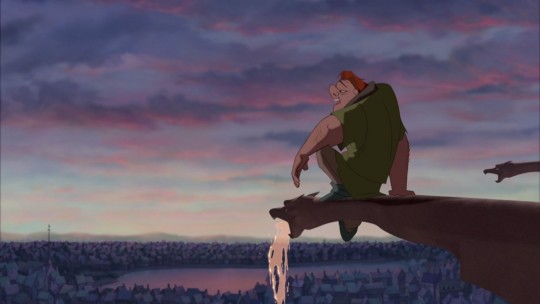
View On WordPress
#Alan Menken#All-4-One#Animation#animazione#Anne Marie Bardwell#Bette Midler#Bob Tzudiker#Buena Vista#Buena Vista Distribution#Carlo Ragone#Charles Kimbrough#Classics Illustrated#Claude Frollo#Clopin Trouillefou#David Odgen Stiers#David Stainton#Demi Moore#Dio fa&039; qualcosa#Disney#Disney Bros. Studio#El jorobado de Notre Dame#Ellen Keneshea#Eros Pagni#Esmeralda#Eternal#Febo#film#film d&039;animazione#Gary Trousdale#Geefwee Boedoe
3 notes
·
View notes
Text
THE FACULTY!
Teachers, Instructors and Coaches of the Lucyverse

Here’s a tribute to all the teachers at the Lucyverse University!
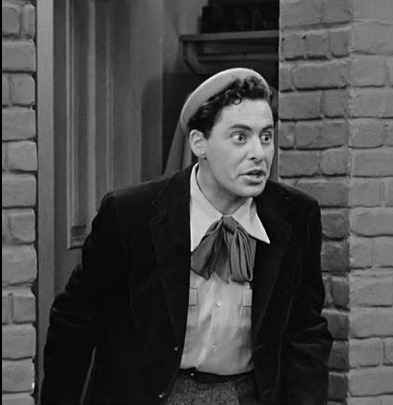
Jean Valjean Raymond (Apache Dancing) played by Shepard Menken in “The Adagio�� (1951). Ethel suggests the recently-arrived cousin of someone at the French laundry to teach Lucy how to dance the Apache. He turns out to be more interested in amore than apache!

Percy Livermore (English / Grammar / Elocution) played by Hans Conried in “Lucy Hires an English Tutor” (1952). Naturally, tutor Livermore has show business aspirations. Conried also played various teachers and instructors on Ball’s radio sitcom “My Favorite Husband.”

Madame LeMond (Ballet) played by Mary Wickes. LeMond was the premiere ballerina of the French Ballet. She puts Lucy through her paces at the barre.

Arthur ‘King Cat’ Walsh (Jitterbug) played by Arthur Walsh in “Lucy Has Her Eyes Examined” (1953). In real life, Walsh was one of Hollywood’s most popular Jitterbug dancers / actors. His first film role was as a Jitterbugging soldier in Stage Door Canteen (1935).
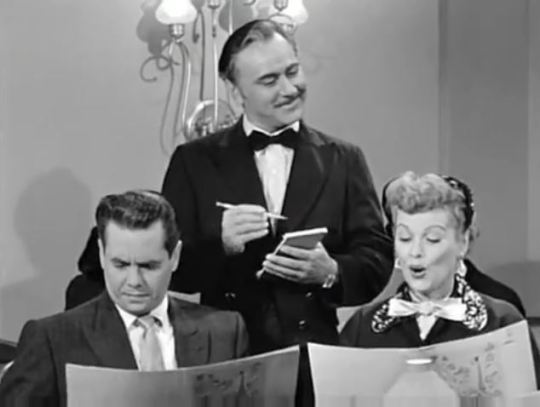
Robert Dubois (French) played by Alberto Morin in “The French Revue” (1953). A waiter moonlighting by giving French lessons, DuBois is really in show business and wants to audition for Ricky at the Tropicana. In reality, Morin was not French, but born in Puerto Rico!
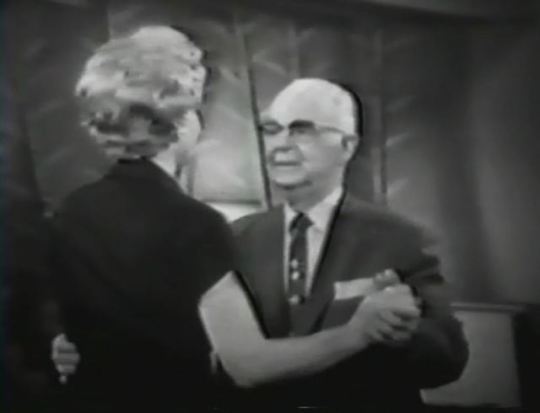
Kitty Winslow (Dance) played by Lucille Ball in “K.O. Kitty” (1958), an episode of the Westinghouse Desilu Playhouse. The dance instructor turns boxing coach when she ‘inherits’ a prize fighter. Lucy Carmichael also coached a prize fighter (played by Don Rickles) in a 1967 episode of “The Lucy Show.”

Henry Taylor (Math) played by William Windom in “Lucy Digs Up a Date” (1962). Although Jerry calls him ‘Old Man Taylor’, he is a new young bachelor recently relocated to Danfield from San Francisco. He replaced teacher Mr. Lucas (a character we never see). In various episodes of “The Lucy Show” Jerry also talks about teachers named Mrs. Lopus and Miss Clementine.

Vito (Fencing Instructor) played by Vito Scotti, also in “Lucy Digs Up a Date” (1962). He gives lessons at the new Danfield YMCA.

Professor Dr. Gitterman (Singing and Acting) played by Hans Conried in “Lucy’s Barbershop Quartet” (1963) and “Lucy Plays Cleopatra” (1963). The roles are reversed when Lucy uses his breath control techniques in “Lucy Teaches Ethel Merman to Sing” (1964).

Dr. Adrian Vance (Chemistry) played by Lou Krugman in “Lucy and Viv Take Up Chemistry” (1963). Vance teaches night school at Danfield High.
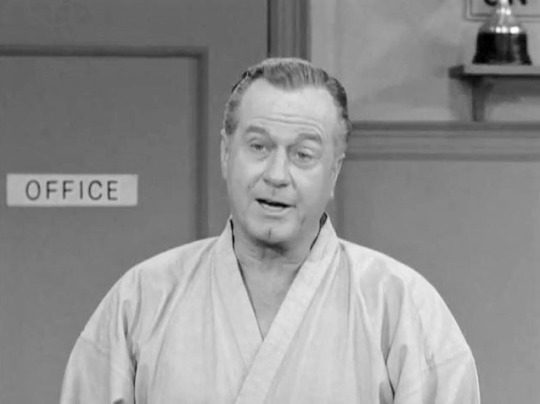
Mr. Sheldon (Judo) played by James Seay in “Lucy and Viv Learn Judo” (1964). Sheldon runs a Judo and Karate studio in Danfield. During the lesson he is assisted by his prize students, Louis Coppola and Ed Parker, who were real-life martial arts experts hired for the episode.

Professor Guzman (Art) played by John Carradine in “Lucy Goes To Art Class” (1964). Guzman teaches Beginning Art Class at Harold’s Stationery and Art Store in Danfield.

Mickey Rooney (Acting) in “Lucy Meets Mickey Rooney”. The school Mickey Rooney wants to open is called The Players Showcase.

When “Lucy Gets Her Diploma” (1967) she attends Wilshire High School. There she has several teachers (top left to bottom right):
Larry Wilcock plays the Math teacher
Barbara Babcock plays the English teacher
Olive Dunbar plays the Biology teacher
Donald Randolph plays the History teacher

Ken Jones (Dance) played by Ken Berry in “Lucy Helps Ken Berry” (1968). Jones teaches a course of tap and soft shoe for $25.

Sister Mary Alice (Grade School Teacher) played by Mary Gregory in the film Yours, Mine and Ours (1968). Sister teaches Lucy’s son Philip and objects to him using his adopted name Beardsley, insisting he is still legally a North.
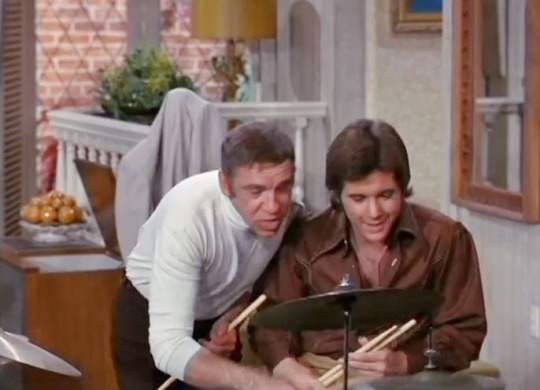
Buddy Rich (Drums) coaches Craig in “Lucy and the Drum Contest” (1970).

Mike Howden plays a Ski Instructor in “Someone’s On the Ski Lift with Dinah” (1971).

Freddy Martin coaches Lucy Carter in the saxophone in “Lucy and Her All-Nun Band” (1971). Martin was a saxophonist and band leader who first gained national attention in 1940 and continued on through the 1970s.
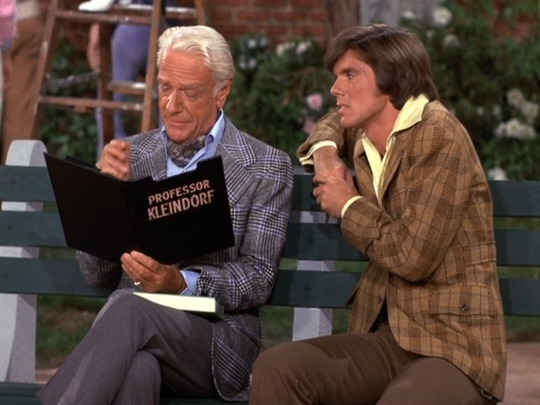
Professor Dietrich and Professor John Kleindorf played by Murray Matheson and John Davidson in “Lucy and the Professor” (1973). Kleindorf is the head of the music department of the college Kim attends. Dietrich is the author of the best-selling book Sex and the College Girl.

Jack Scott (Auto Mechanics) played by Robert Rockwell in “The Not-So-Popular Mechanics” (1973). Scott teaches night courses at Valley Trade School. Rockwell is probably best remembered as biology teacher Mr. Boynton on “Our Miss Brooks” (1952-56) opposite Gale Gordon and Mary Jane Croft, a series filmed at Desilu Studios.

Mr. Tweed (Pottery) played by Roger Twedt in “Lucy and Uncle Harry’s Pot” (1973). Twedt was a real-life art teacher from Palm Springs, California. He also was Lucille Ball’s adviser for using the pottery wheel.
#Lucille Ball#teachers#instructors#professors#coaches#I Love Lucy#The Lucy Show#Here's Lucy#Faculty#TV#Mickey Rooney#Freddy Martin#Hans Conried#Shepard Menken#Robert Rockwell#John Davidson#Buddy Rich#Ken Berry#William Windom#Mary Wickes#John Carradine#Barbara Babcock
5 notes
·
View notes
Text
Hot Vintage Stage Actress Round 1
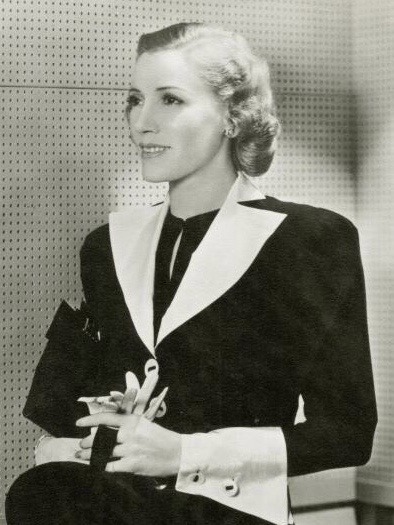

Helen Menken: Diane in Seventh Heaven (1922 Broadway); Irène De Montcel in The Captive (1926 Broadway); Elizabeth I in Mary of Scotland (1933 Broadway); Charlotte Lovell in The Old Maid (1934 Broadway)
Jane Baxter: Lady Maud Marsh in A Damsel in Distress (1928 West End); Margaret in George and Margaret (1937 West End); Viola in Twelfth Night (1948 Old Vic)
Propaganda under the cut
Helen Menken:
her and mae west were arrested on the same night and got into a shouting match where mae west called her a lesbian and she called mae west a drag queen and personally i think the foundation for a really hot enemies to lovers story is 👌
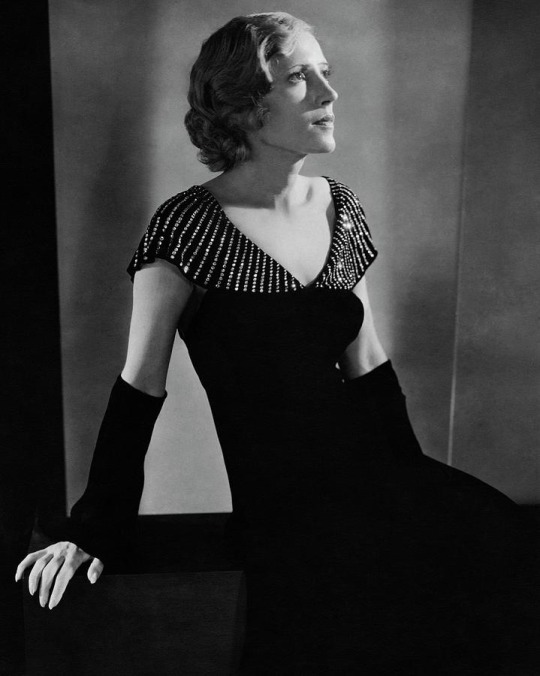

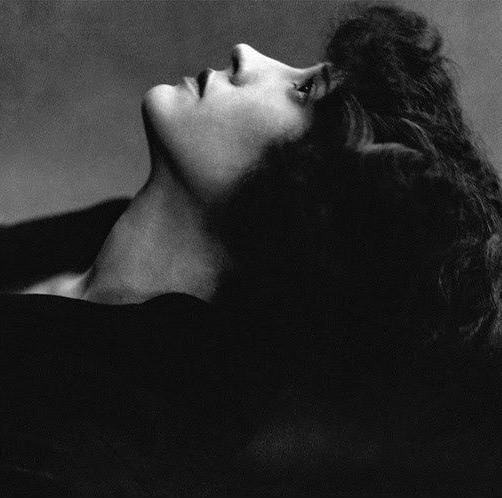

Jane Baxter:

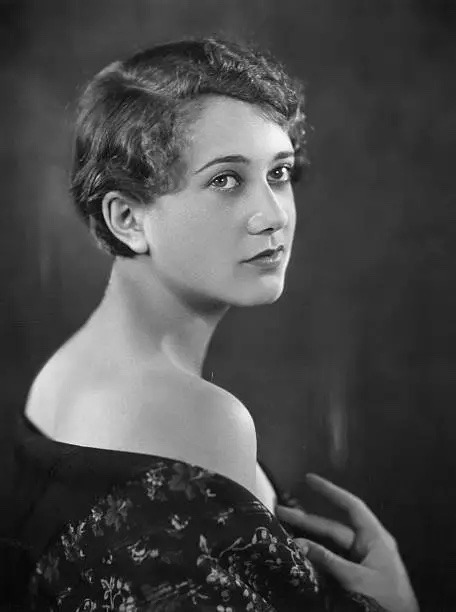
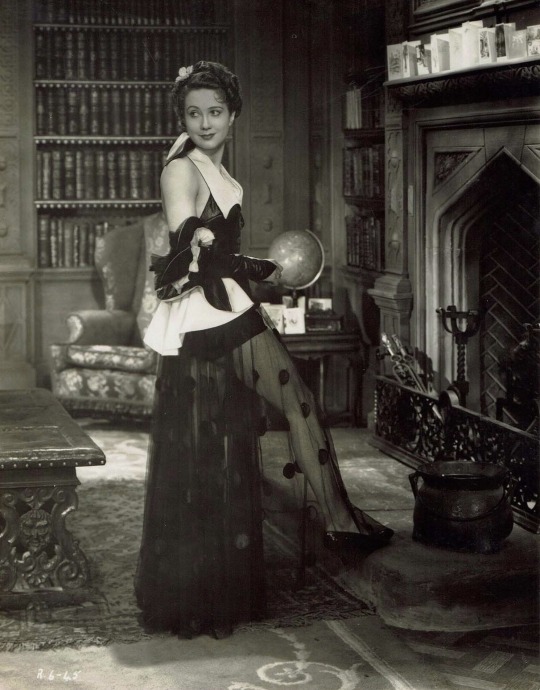
#vintagestagehotties#vintagestagepoll#vintage tournament#vintage poll#helen menken#jane baxter#ladies round 1#vintage ladies
9 notes
·
View notes
Photo



“Fantasía flamenca” - “Arabesque for Kenneth Anger” de Marie Menken
3 notes
·
View notes
Text
A Tale as Old as Time


The 1991 animated Disney musical Beauty and the Beast focuses on the relationship between the prince, the Beast, suffering from the curse of a witch who believed his actions to be filled with evilness and cruelty. The curse extends beyond the prince to his servants, limiting the castle to a fantastical paradox of talking teacups and flirtatious candelabras, with no outside visitors until one day, Belle’s father wanders into the castle for shelter before being taken captive by the Beast. Fiercely ignoring preexisting lore surrounding the dangers of the castle, Bella bravely chooses to fight for her father’s safety herself. She follows the same path to save her father that ultimately leads her to the place of his captivity. But in finding her father she is discovered by the Beast, who makes a deal with Belle: your father is free to go, if you stay. And so she does.

The film is based on the 1756 fairy tale written by Jeanne-Marie Leprince while also combining elements from the 1946 French film directed by Jean Cocteau. The original story heavily emphasizes the importance of valuing internal beauty over external wealth, rewarding those who truly experience and cultivate the power of love.

In what ways does the film's score situate the story within its narrative context?
Let’s get one thing straight, this score is PHENOMENAL. Alan Menken and Howard Ashman intentionally crafted intimate pieces that not only situate the story within narrative context but support its thematic desires. It is known for its intricate melodies, rich harmonies, emotional depth, and employment of techniques that contribute to the storytelling of the film. The score employs leitmotifs, which are recurring musical themes that are associated with specific story elements, emotions, and characters.

Specifically in regards to the main theme of Beauty and the Beast which serves as a representation of the central love story. Both Gaston and the Beast also have their own distinctive motifs. Gaston’s motif is characterized by a brassy and bombastic melody that reflects his arrogance, bravado, and larger-than-life personality like in his song “Gaston”.
youtube
Contrasting Gaston’s motif, the Beast’s reflects his inner turmoil, vulnerability, and eventual redemption. It is much more subdued and melancholic with expressive melodies and lush harmonies that evoke a sense of belonging and isolation like in the song “Transformation.”
Alan Menken also often employs modal mixture which blends elements from both major and minor scales, adding complexity and emotional depth to the music. The score also features chromaticism where notes outside of the signature key are used to create tension and color, especially in conveying darker more sinister aspects of the story, like scenes involving Gaston or the enchanted objects in the castle. The song's in the film follow traditional musical forms like verse-chorus structure with each song utilized to advance the plot or reveal character development.
As described by Miranda (2016), the film's score, composed by Alan Menken and Howard Ashman, employs recurring melodies and leitmotifs to convey themes of love, transformation, and redemption. These musical elements serve to immerse the audience in the enchanted world of the film, enhancing the storytelling experience with their evocative and resonant quality. Furthermore, Miranda (2016) notes the use of modal mixture and chromaticism in the score to reflect the inner conflicts and struggles of the characters, adding layers of complexity to the musical composition. Songs like "Belle" and "Be Our Guest" are highlighted by Miranda (2016) as pivotal in establishing the film's setting within an 18th-century French provincial backdrop, utilizing French-inspired melodies and instrumentation.
youtube
How do songs use character performance to push cultural authenticity in the film’s diegesis?
The songs play a significant role in pushing cultural authenticity in the film's diegesis. These songs allow characters to express emotions, motivations, and thereby developing character personality and advancing the plot. Belle's opening song "Belle" reveals her independence, intelligence, and yearning for adventure which establishes her as a strong and reliable protagonist.
youtube
Similarly Beast's solo "If I Can't Love Her" encourages the audience to understand and examine his inner turmoil and vulnerability despite his being portrayed as evil and cruel. We as the audience are able to give him a second chance as we watch him grow and establish his own sense of self and capacity for love.
youtube
The songs reflect both the cultural context and setting of the story as it grounds the narrative in a French provincial backdrop. The French-inspired melodies, lyrical references, and instrumentation through the soundtrack adds richness and authenticity to the film's diegesis which immerses the audience into the world of 18th century France. This cultural authenticity is especially evident in songs like "Bonjour" and "Be Our Guest" which evokes the strong charm and elegance of French village life and cuisine.
The songs also contribute to the development of relationships between character. Such as "Something There" between Belle and the Beast is an essential turning point in their relationship as they begin to see past each other's exterior and fall In love with each other through genuine connection and mutual understanding. Each song serves as a specific narrative function and helps to reinforce the film's central themes.
youtube
In what ways does the film use musical framing to structure the score within familiarized styles?
The score uses familiar musical genres and styles that the audience feels connected to. Varying tones between numbers like "Belle" features a more upbeat and lively style that is reminiscent of Broadway. This genre familiarity helps to set the tone for the rest of the film by setting a foundation through a sense of nostalgia, especially for audiences familiar with musical theatre. The score itself references classical and romantic-era compositions which add sophistication to the soundtrack. Beast's theme and other instrumental motifs incorporate elements of this Romantic-era music which evokes emotional depth and a sense of grandeur.
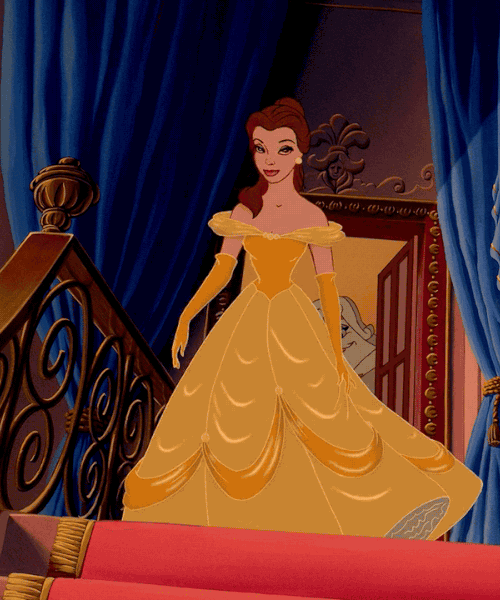
Certain themes are introduced early in the film and recur throughout, subtly undergoing variations and transformation as the story progresses. The main theme of "Beauty and the Beast" serves as an evolving motif that reflects the characters' emotional journey and development of their relationship. The seamless integration of music numbers into the narrative are useful in advancing the plot and developing character relationships as well, serving as musical "frames" within the story that provide content to key moments and themes.
youtube
@theuncannyprofessoro
11 notes
·
View notes
Text
I FINALLY WROTE THE DERRY GIRLS AU. IT HAS TAKEN SO LONG.
PLEASE ENJOY, THIS WAS LOTS OF FUN TO WRITE.
#its not the whole episode but the main part of it#but tada!#derry girls au!#my favourite!#newsies#uksies#newsies fanfic#newsies fanfiction#jack kelly#katherine plumber pulitzer#katherine pulitzer#david jacobs#albert dasilva#racetrack higgins
7 notes
·
View notes
Text
( source )
Michael Eisner described the film's plot as a ''Taming of the Shrew" type story with an angry, bitter Snow Queen looking for a husband.
"Eisner asks for the Snow Queen synopsis. 'The Snow Queen is a terrible bitch,' Ruggels says 'When her suitors try to melt her heart, the Snow queen freezes them.' 'Each one should be a phony, but different,' Eisner says of the suitors. 'Then along comes this regular guy' Ruggels continues... 'The regular guy goes up there, he's not that great, but he's a good person. He starts to unfreeze her... she melts.'"
- Mary-Jane Ruggels and Michael Eisner on The Snow Queen
Though Michael Eisner liked this take on the film, plans fell through when Disney's initial contract with Pixar failed to be renewed.
There are many pieces of concept art from this attempt. And one of the most notable things to survive is a deleted song titled "Love Can't Be Denied", which was written by Alan Menken.

#i'm on a bdj phase and found this neat little gem#i guess this would be sung by the snow queen/elsa's love interest...?#anyway ruggel's pitch was v e r y contrived but at least it gave us some fantastic art by mike gabriel and harald siepermann#brian d´arcy james#frozen#the snow queen#alan menken#disney#musical#musicals#off-topic: animation#audio#posted
7 notes
·
View notes
Text
La bella e la bestia (1991)
La bella e la bestia (1991)
Benvenuti o bentornati sul nostro blog. Nello scorso articolo siamo tornati a parlare della Disney e per la precisione dei suoi classici animati, arrivando così al secondo film del Rinascimento, Bianca e Bernie nella terra dei canguri. La storia è ambientata in Australia e vede Cody, un ragazzino che ama la natura e gli animali, liberare una rara aquila dorata. Il bambino però viene catturato da…

View On WordPress
#Alan Menken#Angela Lansbury#Beauty and the Beast#Beauty and the Beast 1991#Belle#Buena Vista#Cranium Command#David Odgen Stiers#Disney#Don Hahn#drammatico#film#film d&039;animazione#Francia#Gary Trousdale#Gaston#Howard Ashman#Jeanne-Marie Leprince de Beaumont#Jeffrey Katzenberg#Jerry Orbach#Jesse Corti#Jo Anne Worley#John Carnochan#Kirk Wise#La Bella e la Bestia#Le Tont#Linda Woolverton#Lumière#movies#musical
3 notes
·
View notes
Text
THE FACE IS FAMILIAR... BUT I CAN'T PLACE THE NAME!
Same Actor / Different Character ~ Part 1: "I Love Lucy"

It used to be quite common for actors to be cast in multiple roles on the same series. Not in principal parts, certainly, but in supporting and minor characters. Lucycoms were no exception. Although the world created by these shows was representative of reality, the characters who populated them often gave viewers Deja vu.
For the purposes of this discussion, we won't include background performers (aka extras) as they were nearly always drawn from the same pool of actors. Also, those who played multiple characters need to have at least two of them identified by name. We will, however, include "the "The Lucy-Desi Comedy Hours" in our discussion of "I Love Lucy".
FRANK NELSON

A busy character actor, Frank Nelson has the distinction of being the only performer to play more than one recurring character (a character seen in more than one episode) on "I Love Lucy": Quizmaster Freddie Fillmore and Westport neighbor Ralph Ramsey. In addition, he played a nearsighted waiter, a TV host, a policeman, a a talent scout, a customs officer, a cruise director, and (perhaps most famously) a train conductor. His turn as the conductor was so memorable, he reprised it on "The Lucy Show" in 1963. Lucy has worked with Nelson on her radio show and new that audiences loved him - so she had no problem engaging him time and time again.
CHARLES LANE
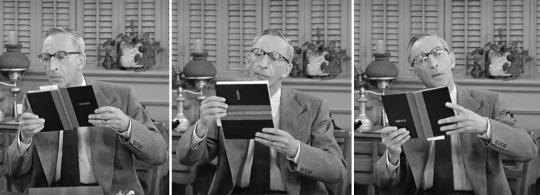
Another familiar face was veteran character actor Charles Lane. Instead of radio, Lane came from the world of film, having done several pictures with William Frawley. He played a total of six characters, including Mr. Stanley, father of nine girls when "Lucy Goes to the Hospital." He followed up with Mr. Hickox "The Business Manager", a casting director, a passport office clerk, a uranium claims officer, and (like Nelson) a customs official, this time at the Mexican border. Lucille Ball created a role for him on "The Lucy Show", only to let him go to make way for a similar character when Gale Gordon finally became available. But that didn't stop Lane, who kept acting until he died at the age of 102!
MARY JANE CROFT
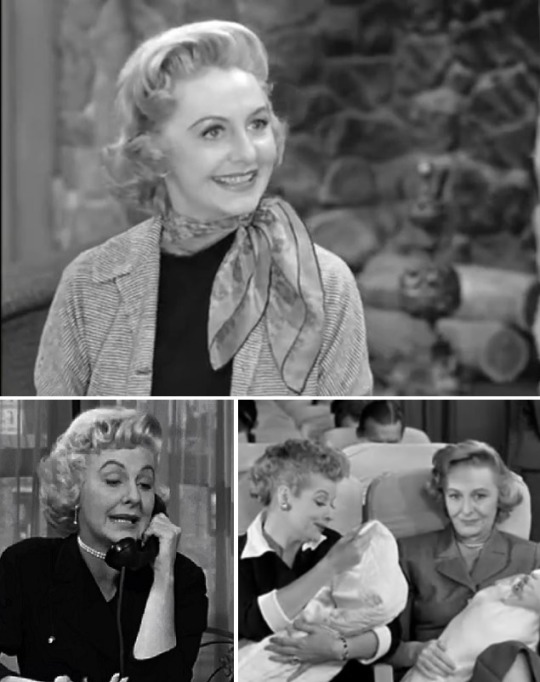
Before settling into the role of Betty Ramsey (with Frank Nelson as her husband Ralph), Croft played the role of Lucy Ricardo's old chum Cynthia Harcourt, who's request for a charitable donation forces Lucy to take a job as a woman from Mars. She returned to new mother Evelyn Bigsby, who sits next to Lucy on the plane home from Europe. Interestingly, Frank Nelson is also in this episode. Just a few months later the pair are back as the Ramseys. Viewers didn't need to have long memories to think the Ricardos' Westport neighbors looked familiar.
ELIZABETH PATTERSON
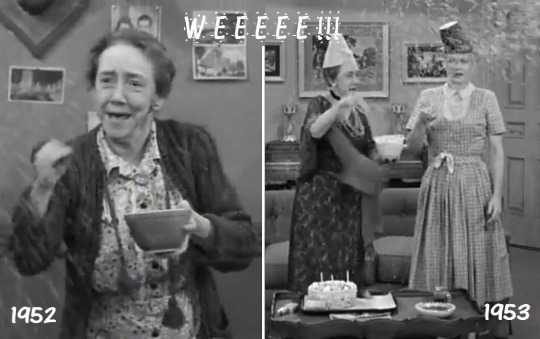
Viewers fondly remember Patterson as Mrs. Trumbull, the lovable spinster who babysat Little Ricky. On her first episode in 1953, the character was irascible, but grew more likeable over the seven more appearances that followed. Many forget that when Lucy and Ricky renewed their vows in Greenwich Connecticut, Patterson played Mrs. Willoughby the mayor! Mr. Willoughby was played by....
IRVING BACON
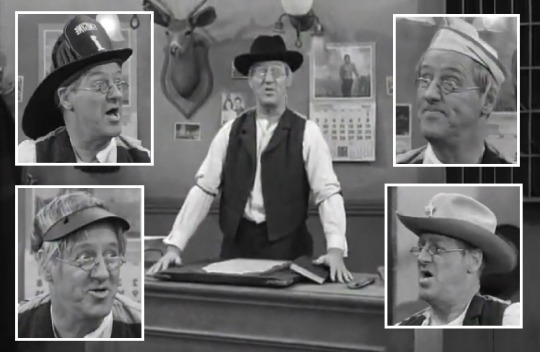
Bacon wore many hats (literally) as the man who greeted the Ricardos in Greenwich. But he must've done something right because he was asked back to play Will Potter when the gang drove through "Ethel's Hometown" on their way to Hollywood.
KATHRYN CARD

Best remembered as the scatterbrained Mrs. McGillicuddy, Card was nearly unrecognizable when she was first seen on the series, as Minnie Finch's brusque neighbor in "Fan Magazine Interview" (1954). Mother (she never had a first name) was seen in seven episodes in 1955 and 1956.
HERB VIGRAN

Busy character man Herb Vigran started on "I Love Lucy" playing Jule, Ricky's music agent in two 1952 episodes. But when Lucy's washing machine goes on the fritz, Vigran shows up as Joe, a repairman who also happens to be Mrs. Trumbull's nephew. He also was seen as Hal Sparks, the publicity man who convinces Lucy and Ethel to dress as women from Mars at the top of the Empire State Building.
PARLEY BAER
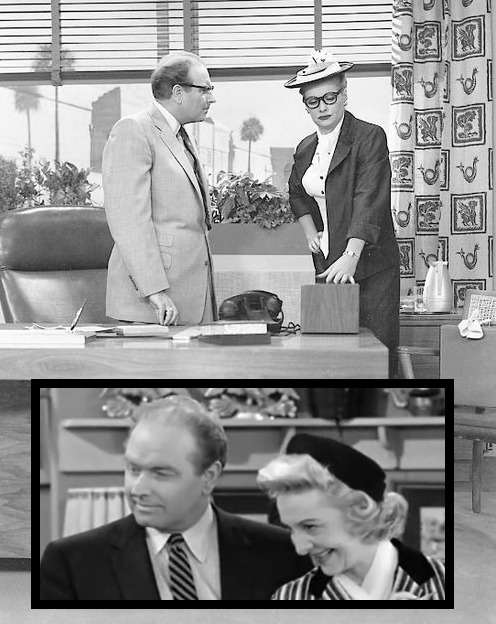
Baer’s first collaboration with Lucille Ball was playing MGM’s Mr. Reilly in "Ricky Needs an Agent” (1955). He returned to the series as Connecticut furniture salesman Mr. Perry in "Lucy Gets Chummy with the Neighbors” (1957).
SHEPARD MENKEN

Menken did four different characters from season one to season six. He adopted a French accent to teach Lucy to Apache dance as Jean Valjean Raymond, sold Lucy clay as art store salesman William Abbott, examined Lucy's vision as an eye doctor, and reverted to his French accent to sell Lucy mass-produced art as Parisian con-man Charpontier.
DAYTON LUMMIS
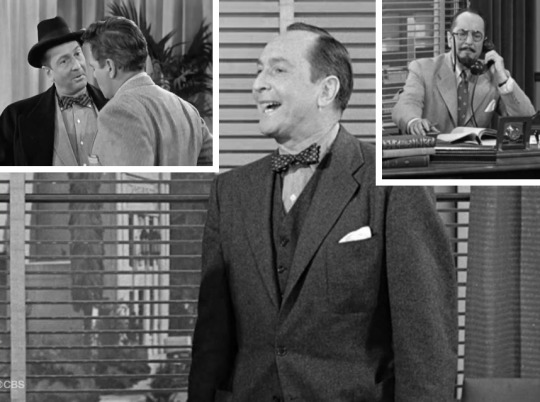
Also in "Lucy Has Her Eyes Examined" (1953) we see Dayton Lummis for the first time as producer Bill Parker ("Parker Preps Prod for Pittsburgh Preem"). He returned the following year as publisher Mel Eaton when "Lucy Writes a Novel" (1954) and yet a third time as MGM producer Mr. Sherman in "LA at Last!" (1955).
LOU KRUGMAN

Viewers didn't meet Lou Krugman until season four, when he played the film director coping with Lucy and her unwieldy headdress. Ball was so impressed by him that she immediately cast him as the FBI agent on the train back to New York. When Lucy reprised her heavy headgear routine on a TV special, Krugman was again at her side. In season six, he was cast as the manager of the Club Babalu, formerly the Tropicana. The job lasted just two episodes before the action of the show shifted to Connecticut.
JAY NOVELLO

Novello was one of Lucille Ball's favorite performers from her radio show, playing Mr. Negley the postman and other quirky characters. On "I Love Lucy" he was first (perhaps best) remembered as theatrical producer Mr. Merriweather, who longs to talk to his beloved Tilly in "The Seance" (1951). He returned to play Mr. Beecher, the skittish tenant in "The Sublease" (1954), and "The Visitor From Italy" (1956), who arrives looking for his brother Sam Franchesca. Or maybe San Francisco.
JOHN HART
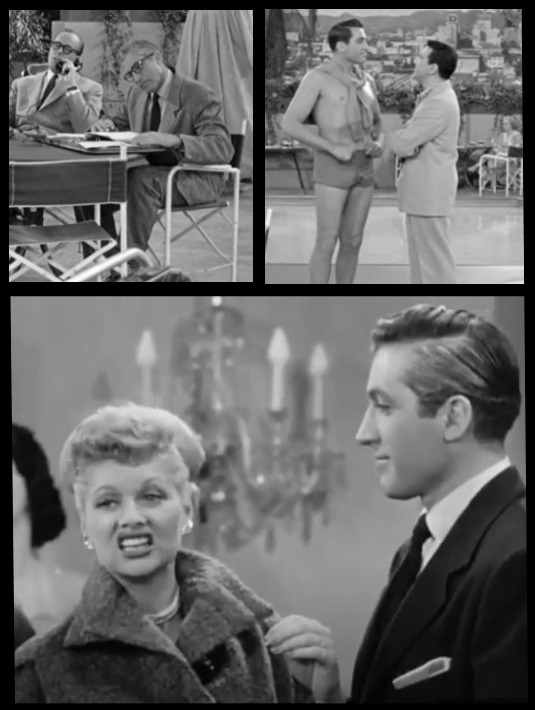
Another actor to score a trifecta was John Hart. Producer Jess Oppenheimer didn’t want to pay too much for the actor who would play Tom Henderson in "Lucy Changes Her Mind" (1953), a character who only says two words at the very end of the show. He wrote in the script that he wanted “the most handsome hunk of man anyone ever saw for $15.56.” Hart was cast. He returned (hopefully with a pay raise) to play the lifeguard who saves Lucy (despite her best efforts) in "The Hedda Hopper Story," and to play Jim Stevens, a studio executive meeting with Dore Schary poolside (the same pool he guarded in the previous episode) in "Don Juan is Shelved" (1955).
ELVIA ALLMAN

Another of Lucy's favorites from her radio sitcom was Elvia Allman. Even the most casual fan of "I Love Lucy" will recognize her as the barking foreperson at the chocolate factory ("Speed it up a little!") but she also returned to play one of Minnie Finch's neighbors ("Do you wanna see Minnie or don't ya?"). In a change of pace, she played Nancy Graham, the prim columnist who thinks Lucy should "cherish" Ricky. She also encountered Lucy Ricardo as Ida Thompson of the Westport PTA, and as Milton Berle's officious secretary.
HANS CONRIED

Perhaps no other performer was as beloved by Lucy and Desi as Hans Conried. He was seen on all of Lucy's TV and radio shows as well as in a film with her. On "I Love Lucy" he had time to do just two roles: the foppish English tutor Percy Livermore and the unscrupulous used furniture dealer Dan Jenkins. These two diverse characters showed Conried's range as an actor, so viewers can be forgiven for not noticing that they were the same actor - even though their airdates were just a month apart!
BOB JELLISON

Most viewers remember Jellison as the bell hop at the Beverly Palms Hotel. He played the portly luggage jockey for six episodes in 1955. Jellison was so convincing in the role that in "Lucy Hunts Uranium" (1958), he was once again cast as the bellboy, this time named Henry. But few remember him in his first series appearance, as the milkman (or “cow juice peddler”, as Bill Foster called him) in "The Gossip" (1952).
JOSEPH KEARNS

Kearns was another veteran of Lucille Ball's radio series. He found fame as Mr. Wilson on "Dennis the Menace". He played Dr. Tom Robinson, a psychiatrist, in "The Kleptomaniac" (1953). He returned to the show in its final season as the Theatre Manager in "Lucy's Night in Town" (1956). "If four people are seeing the show, then four have got to pay!" He died while still playing Henry Wilson so instead of recasting, George's brother arrived in town, played by...
GALE GORDON

Gordon's relationship with Ball goes back to 1938 on radio. She spent the rest of her career casting him on her various shows. She had intended for him to play Fred Mertz, but he was too busy - and too expensive - so Desi cast William Frawley. Lucy, however, wanted Gordon on the show, so the role of Mr. Littlefield, manager of the Tropicana, was created. The character appeared in two episodes. He wasn't seen with Lucy again until 1958, when he played a Judge that is tasked with deciding a case between the Ricardos, the Mertzes, and the Williams', in "Lucy Makes Room for Danny".
PHIL OBER

Ober was Vivian Vance's husband, so it makes sense that he would make at least one appearance - and he did - as the fake husband sent to the Ricardo apartment by "The Quiz Show" (1951). Ober's marriage eventually ended when Vance accused him of cruelty, but before that could happen, he was a last minute replacement for Dore Schary when "Don Juan is Shelved" (1955). Schary was a real-life MGM movie producer who was scheduled to appear as himself. He either got sick or (more likely) got cold feet. So Ober played Schary instead, leaving many unsavvy viewers thinking that Ober WAS Schary! Speaking of bad marriages and "The Quiz Show"...
JOHN EMERY

...played Harold the Tramp that was confused for Ober's character. Emery had been married to tempestuous Tallulah Bankhead from 1937 to 1941. Their four short years together were compared by Emery to "the decline of the Roman Empire". He played a Doctor in Lucy and Desi's 1956 film Forever Darling. It wasn't long before he was back at "I Love Lucy" to play the pet-hating Mr. Stewart when "Little Ricky Gets a Dog" (1957).
MADGE BLAKE
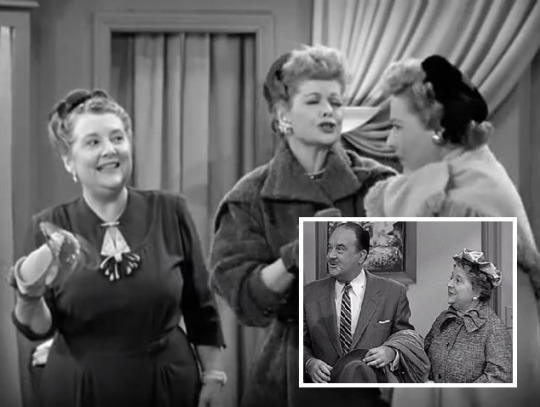
Blake is best remembered as Batman's Aunt Harriet, but after her notable role of the gossip columnist in Singin' in the Rain (1952), she was cast on "I Love Lucy" as Mrs. Mulford, the owner of the hat shop when "Ricky Loses His Temper" (1954). Lucy and Desi were introduced to her talent when she played Aunt Anastacia in The Long, Long Trailer. She was asked back in late 1956 to play Martha, the acrophobic prospective tenant for apartment 3B in "Lucy and Superman" (1957).
VERNA FELTON

Felton is probably best remembered as Lucy's demonstrative maid Mrs. Porter, but she first appeared as Mrs. Simpson, a housewife living without electricity but with lots of "Sale Resistance" (1953). The two roles aired just three months apart. A few months later Lucy and Desi cast her as series regular Hilda Crocker on their new sitcom "December Bride" (1954-57).
HAZEL BOYNE

A former dancer, Boyne was born on Independence Day 1883 and was 68 years old when "Men Are Messy" (1953) was filmed. She charmed audiences as Maggie, the Tropicana's Irish cleaning woman, dancing with Ricky during his rehearsal. She would go on to play one of Minnie Finch's neighbors in "Fan Magazine Interview" (1954) and a (don't blink) passenger on "The Great Train Robbery" (1955).
HAL MARCH

March had been an original cast member of "My Favorite Husband." In the first season of "I Love Lucy" he played an actor named Hal March who Ricky asks to masquerade as a doctor when "Lucy Fakes Illness" (1951). At the end of the show, announcer Johnny Jacobs says “The part of Hal March was played by Hal March.” March returned to the show to play womanizing lingerie salesman Eddie Grant in “Lucy Is Matchmaker” (1953).
WILL WRIGHT
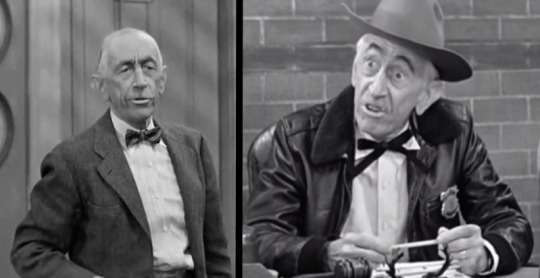
Wright did two films and a radio show with Lucille Ball before being seen on "I Love Lucy." First, he played Mr. Walters, the locksmith from Yonkers, in “The Handcuffs” (1952). He returned to the series to play Bent Fork Sheriff (and father of Teensy and Weensy) in “Tennessee Bound” (1955).
ALBERTO MORIN
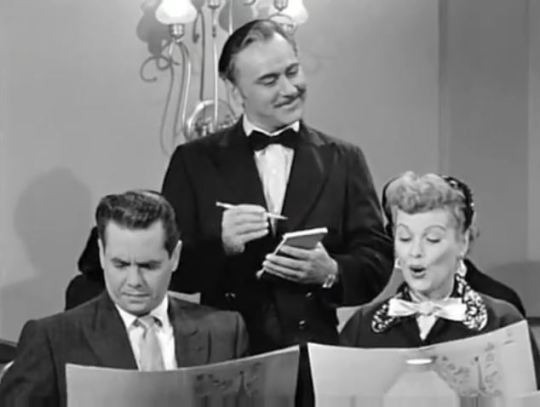
Morin was Carlos, one of Ricky's "Cuban Pals" (1952). He had appeared in some of Hollywood's most cherished films: Gone with the Wind (1939), Casablanca (1943), and Key Largo (1948). He was invited back to play Robert Dubois, waiter turned tutor in "The French Revue" (1953).
HY AVERBACK
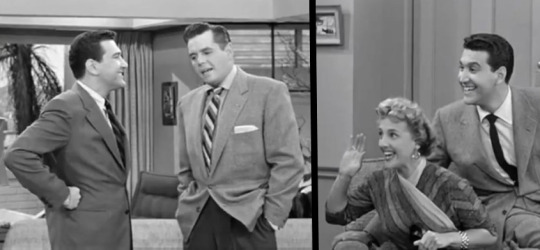
Averback played two different Charlies on "I Love Lucy": Appleby and Pomerantz. Charlie Appleby was seen twice on the series, but was only played by Averback on his first appearance in 1953. Charlie Pomerantz was Ricky's press agent in Hollywood in 1955, coming up with the brilliant idea for Ricky to save Lucy from drowning in the hotel pool.

Naturally, there were many other actors whose did double (or triple) duty on "I Love Lucy", chief among them Bennett Green and Hazel Pierce, Lucy and Desi's camera and lighting stand-ins and were omnipresent throughout the series, although not always with specific character names.
#I love Lucy#Lucille ball#desi arnaz#TV#Actors#Casting#Frank Nelson#Mary Jane Croft#Elizabeth Patterson#Irving Bacon#Kathryn Card#Herb Vigran#Parley Baer#Shepard Menken#Dayton Lummis#Lou Krugman#Jay Novello#John Hart#Elvia Allman#Hans Conried#Bobby Jellison#Joseph Kearns#Gale Gordon#Phil Ober#John Emery#Madge Blake#Verna Felton#Hazel Boyne#Hal March#Will Wright
1 note
·
View note
Note
not to be needy or demanding or anything, but i’m still super curious about more of your thoughts on musicals! you said you had at least 10 more and it’s pretty much all i’ve been thinking about the past two days! 🖤 (thank you for responding to the first one by the way 🥹)
I got busy!
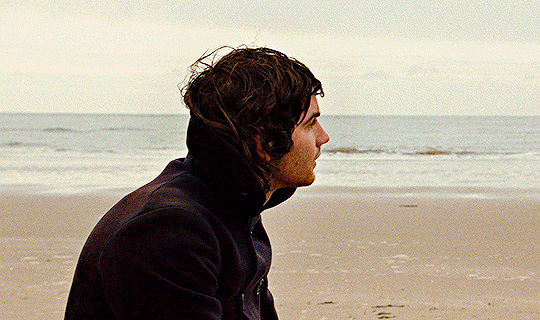
The first time I heard of Julie Taymor, it was when she signed on for what would eventually become the legendary Broadway disaster Spider-Man: Turn Off the Dark. I’m not sure, but I think my first Taymor movie was Titus with Anthony Hopkins. (I’ve also seen The Tempest with Helen Mirren as Prospero.) But the movie I’ve watched over and over? Across the Universe, her bold, flawed attempt to turn The Beatles’ oeuvre into something approximating a connected narrative. Evan Rachel Wood is adorably fucked-up —she’s the Jennifer Jason Leigh of her generation— and Jim Sturgess was pretty much born to bring charm to a patchwork character like Jude.

I cannot for the life of me figure out why my parents let me go see The Best Little Whorehouse in Texas. I know they were teetering on the edge of divorce and were desperately looking for some Family Activity, but I feel like taking a tween and his little brother to a Dolly Parton/Burt Reynolds musical about cheerful, singing prostitutes was… a choice. I remember being told to cover my eyes every time a tit popped out, but that’s about all the curation they did. I’m being generous to call it a modest work, but Dolly is always a gem, and Burt had more screen charisma than just about anyone on the planet.

Bo Burnham: Inside is the only perfect thing made during the pandemic. It’s not easy to watch… even when it’s fun, it’s not. But the kid’s gifts are just off-the-charts, and he perfectly captures the vibe of 2020 in a series of catchy, depressing, hilarious songs.

I ignored Lin Manuel Miranda for a long time, and when I watched Moana, I felt justified in ignoring him… I almost snoozed through it. But when Disney+ released the recording of Hamilton and everyone else was watching it, I figured “what the fuck, join the herd.” So I did. And I was extremely disappointed for about thirty minutes. This oily little twerp can’t sing! What is this shit?! Then Renee Goldsberry raises her glass, the turntable spins backward, the narrative breaks free, and thirty minutes later, the oily little twerp with the thin voice had me crying. Sure, Jonathan Groff and Daveed Diggs steal the show over and over, but how could they not? LMM gave them gold, and they ran with it.

Jewison’s Jesus Christ Superstar is so fucking ‘70s, I almost feel slapped by all the bell-bottoms. And that fruity, goofy opening on the bus tested my twenty year old patience when I first saw it. But when Carl Anderson’s Judas came roaring on to the screen, I was hooked. Then I realized Yvonne Elliman —whose “If I Can’t Have You” is probably my favorite disco song of all time— was Mary Magdalene and “I Don’t Know How To Love Him” hit, so I was taken from “hooked” to “mesmerized”. I wasn’t instantly in love with Ted Neeley’s Jesus for much of that first viewing, but when he lets loose in Gethsemane… well… Jesus.

The Little Mermaid wasn’t the first musical I loved, but it was the first one I bought. I grew up in a time when Disney animation was basically garbage, with nothing meaningful being produced for decades… and then along came Ariel with her collection of forks, and that sonorous crab. When Disney released it at a then-unheard-of price of twentysomething bucks, I gave it a shot… over and over and over again.
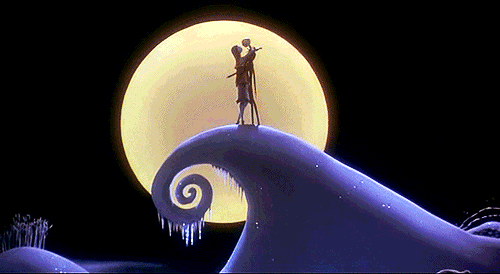
My relationship with The Nightmare Before Christmas is trickier. I don’t deny that it’s good, and I grasp that it has dug its claws deep into the culture, but the music… it’s okay. It’s fun. But I seldom find myself humming a tune.
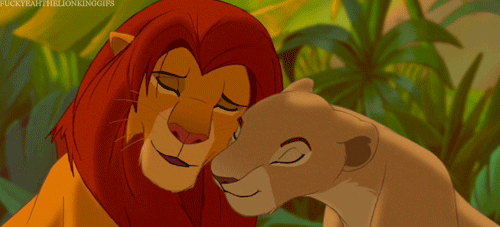
I’m not going to get all detailed about The Lion King, Beauty and the Beast, or Aladdin. They were good. Ashman and Menken kicked ass. I’m not in love with any of them —“Hakuna Matata” was kinda run into the ground at the time— but I acknowledge their value.

I’m running out of steam here, and I’ve already raved about Encanto on the blog, so I’ll close with the thought that “Surface Pressure” is the best Disney song that isn’t about loving something, and it is perfect.
12 notes
·
View notes